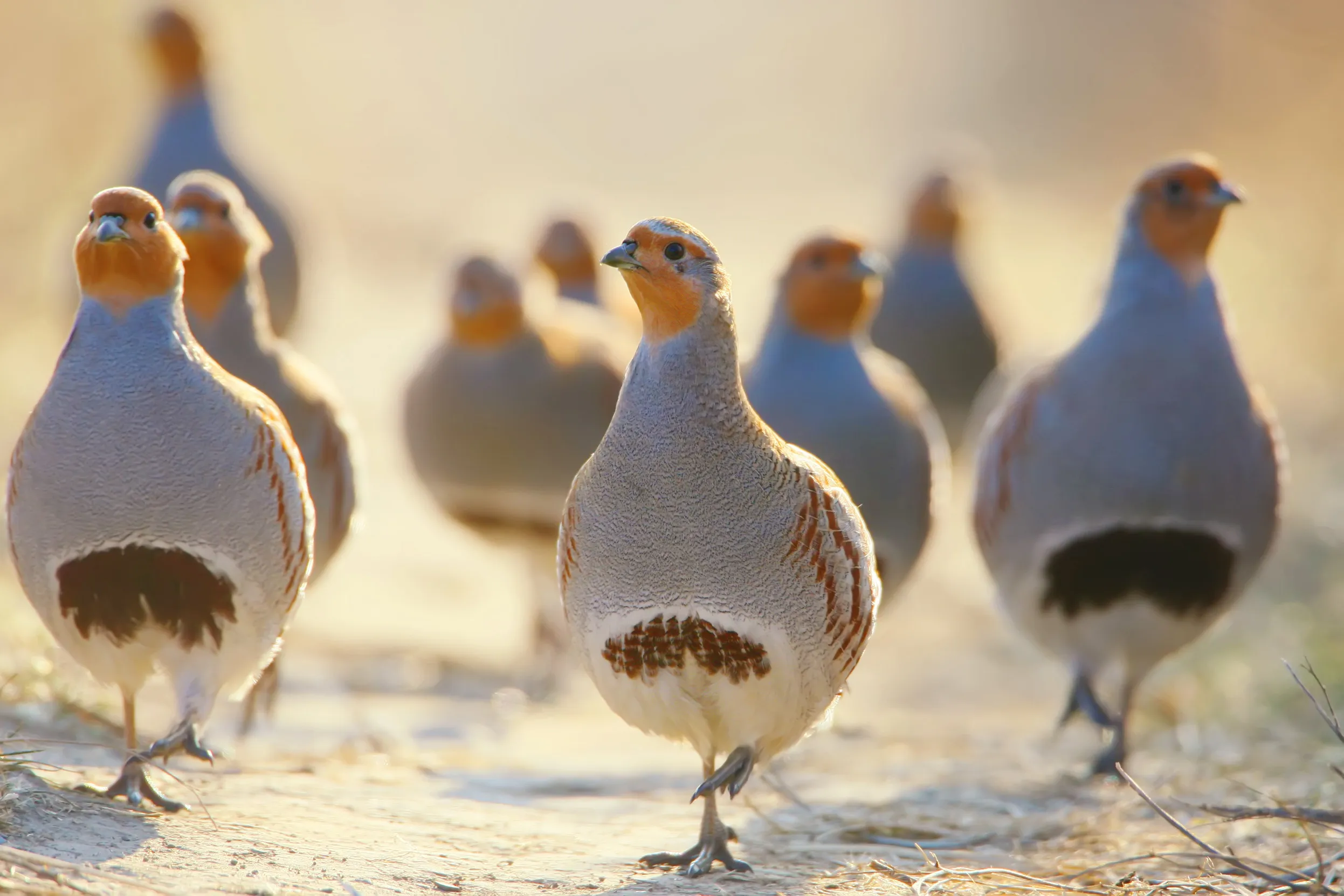Grey Partridge conservation - Advice for farmers
The Grey Partridge can be found in most farming systems except predominantly improved grasslands.

On this page
Grey Partridges in brief
The UK Grey Partridge population has declined by 92% since 1967. This has been mainly caused by the loss of insect food sources on farmland.
The loss of seed sources, loss of nesting habitat and predation have also contributed.
Key points
- Create a brood-rearing habitat with plenty of insect food adjacent to good nesting areas.
-
Create brood-rearing habitat with plenty of insect food adjacent to good nesting areas.
-
Provide seed food through the winter with wild bird seed mixtures or overwinter stubble.
-
Get involved by joining The Game Conservancy Trust’s Partridge Count Scheme
What this species needs
Insects to feed to chicks in the spring and summer
Grey Partridge chicks feed on insects, especially Caterpillars, Beetles, bugs, Ants and Aphids. Breeding is more successful when there is plenty of this food available. Chicks take insects mainly from crop margins.
Lots of seeds throughout the year
Adult Grey Partridges feed mainly on seeds and shoots throughout the year. They seek places where they can find lots of seed food. Such areas include winter stubbles, harvested root crops, newly-sown crops and weeds in the crop margins.
Safe nesting cover
Grey Partridges nest on the ground in hedge bottoms, grass margins, beetle banks, cereals, game cover and nettle beds. Dead tussocky grass left over from the previous year is particularly attractive as nesting cover.
How to help
On arable land
- Only use pesticides when the infestation exceeds the economic threshold. Try to avoid using broad-spectrum insecticides after 15 March. These remove beneficial insects and spiders that move into the crops in the spring. The loss of this food source is particularly damaging to Grey Partridges.
- Adopt conservation headlands. Avoid spraying the outer 6m of cereal fields with non-selective insecticides or herbicides. This enables beneficial insects and chick food for Grey Partridges to survive.
- Spray and cultivate stubbles as late as possible as they provide important winter feeding habitat.
- You can provide seed food throughout the winter using wild bird seed mixtures. Establish a seed- rich crop in the spring and maintain it for up to two years. Kale (two-year mixes only) and quinoa are particularly useful components in the mix.
- You can also establish brood-rearing cover in the autumn. Use a mix of a cereal and a brassica, such as mustard or linseed, and up to 5% red clover to attract insects. Establishing this adjacent to a tussocky grass margin creates an insect-rich chick feeding area. Maintain this for two years to provide seed in the second winter.
- Create grass margins around arable fields as nesting habitat for Grey Partridges. Include species such as cocksfoot in the seed mix to create tussocks. After the margins are established, cut only in the autumn once every three years. Avoid cutting all margins in the same year.
- Use Beetle banks in fields greater than 0.2 square kilometres to provide nesting cover and overwintering habitat for beneficial insects. Beetle banks are 2m grass strips through the middle of arable fields. Such fields can be managed as one unit, as the headland is still cropped.
On grassland
- Growing spring-sown arable fodder crops or small plots of wild bird cover will benefit grey partridges in areas that are largely agricultural grassland. The crop and following stubble both provide abundant seed food.
- Undersown cereal crops will provide seed food through the winter. The lack of cultivation in the autumn as well as restrictions on herbicide use will produce an abundant supply of insects.
- Fence off margins of up to 6m around improved grass fields and leave these unfertilised, uncut and ungrazed. Graze or cut in September every 2-3 years. Avoid cutting all margins in the same year. Select margins that are adjacent to short thick hedges.
The Partridge Count Scheme
- Take part in the count! Find out more at the Game & Wildlife Conservation Trust.